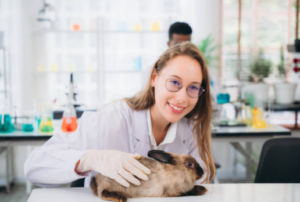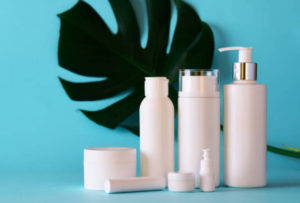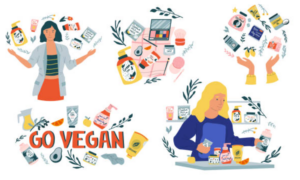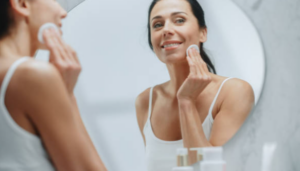Confronting Greenwashing

In the era of conscious consumerism, the beauty industry is witnessing a significant shift towards ethical and sustainable practices. Terms like “cruelty-free” have become a mantra for many consumers seeking products that align with their values of compassion towards animals. However, beneath the surface of these seemingly virtuous claims lies a complex web of greenwashing – the deceptive marketing tactic used by companies to portray themselves as more environmentally friendly or ethical than they really are. This blog aims to delve into the world of cruelty-free claims, exposing the loopholes and ambiguities that mislead consumers, and offering guidance on how to navigate this landscape with integrity and awareness.
At its core, the term “cruelty-free” implies that a product and its ingredients have not been tested on animals. This concept resonates deeply with consumers who prioritize animal welfare and ethical sourcing. However, the reality is far more nuanced. While many brands proudly display a bunny logo or claim to be cruelty-free, the absence of animal testing does not necessarily mean the absence of animal-derived ingredients or ethical supply chains.
The Complexities of Ingredient Sourcing
The beauty industry relies on a vast array of ingredients, many of which are derived from natural sources, including plants, minerals, and animals. While plant-based ingredients are often favored for their perceived ethical and sustainable qualities, the reality is more nuanced.
- Animal-Derived Ingredients
Despite the growing demand for cruelty-free products, many beauty formulations still contain animal-derived ingredients. These can include:
Lanolin: Extracted from sheep’s wool, lanolin is a common emollient found in skincare products such as moisturizers and lip balms. While lanolin itself does not involve animal testing, its production raises ethical concerns surrounding animal welfare and environmental impact.
Carmine: Also known as cochineal, carmine is a red pigment derived from crushed cochineal insects. Widely used in lipsticks, blushes, and eyeshadows, carmine poses a dilemma for consumers seeking truly cruelty-free products. Despite its natural origins, the harvesting of cochineal insects can involve harm to animals and raises questions about the ethics of insect-derived ingredients.
Collagen: A protein found in animal tissues, collagen is prized for its skin-plumping properties and is a common ingredient in anti-aging skincare products. While some brands claim to derive collagen from ethically sourced marine sources, others may rely on animal by-products such as bones and connective tissues, raising concerns about animal welfare and sustainability.
- Supply Chain Transparency
Ingredient sourcing within the beauty industry is often shrouded in secrecy, with brands relying on a complex network of suppliers and subcontractors to procure raw materials. This lack of transparency makes it difficult for consumers to trace the origins of ingredients and assess their ethical and environmental impact.
Middlemen and Intermediaries: Beauty brands often source ingredients through middlemen and intermediaries, who may in turn obtain them from various suppliers around the world. This convoluted supply chain makes it challenging to verify claims of ethical sourcing and raises concerns about labor practices, environmental degradation, and animal welfare in regions where regulations may be lax or poorly enforced.
Certification and Verification: While certification schemes such as the Leaping Bunny logo provide a degree of assurance regarding animal testing, they do not address the broader issues of ingredient sourcing and supply chain transparency. Brands may claim to be cruelty-free based solely on the absence of animal testing, while turning a blind eye to the ethical implications of their ingredient sourcing practices.
- Ethical Dilemmas
The beauty industry’s reliance on animal-derived ingredients raises ethical dilemmas for consumers seeking to align their purchasing decisions with their values. While some may prioritize animal welfare above all else and opt for vegan or plant-based products, others may be willing to compromise on certain ingredients if they believe the overall impact is minimal or if viable alternatives are not readily available.
Personal Values vs. Practical Considerations: Consumers must weigh their personal values against practical considerations such as product efficacy, affordability, and accessibility. While some may be willing to pay a premium for ethically sourced and cruelty-free products, others may prioritize affordability or convenience, leading to compromises on ingredient sourcing and ethical standards.
Navigating Ethical Gray Areas: In an industry rife with ambiguity and conflicting claims, consumers must navigate ethical gray areas and make informed choices based on the information available to them. This may involve researching brands, scrutinizing ingredient lists, and supporting companies that demonstrate a genuine commitment to transparency, accountability, and animal welfare.

The Role of Certification
Certification schemes play a pivotal role in verifying claims of cruelty-free status and providing consumers with reassurance that their purchasing decisions align with their ethical values. While certification is not without its limitations, it serves as a valuable tool for promoting transparency, accountability, and trust within the beauty industry. Here are some key aspects to consider:
- The Leaping Bunny Logo
The Leaping Bunny logo, administered by Cruelty Free International, is one of the most recognized certification schemes for cruelty-free beauty products. To earn the Leaping Bunny certification, brands must adhere to strict criteria, including:
No Animal Testing: Brands must ensure that neither their products nor their ingredients are tested on animals at any stage of production.
Supply Chain Verification: Brands must conduct thorough audits of their entire supply chain to ensure compliance with cruelty-free standards. This includes vetting suppliers, subcontractors, and third-party manufacturers to verify their commitment to animal welfare.
Annual Renewal: Certification is not a one-time process; brands must undergo annual renewal audits to maintain their Leaping Bunny status. This ongoing scrutiny helps to ensure ongoing compliance and accountability.
- Third-Party Verification
One of the key strengths of certification schemes like Leaping Bunny is their independent third-party verification. Unlike self-regulated claims made by brands themselves, certification schemes are overseen by impartial organizations with expertise in animal welfare and ethical sourcing. This provides consumers with greater confidence in the authenticity of cruelty-free claims and helps to combat greenwashing within the industry.
Global Recognition: The Leaping Bunny logo enjoys global recognition, making it easier for consumers to identify cruelty-free products regardless of their location. This standardized approach to certification helps to streamline the purchasing process and provides consumers with a consistent benchmark for ethical beauty.
Limitations and Criticisms: While certification schemes like Leaping Bunny provide valuable reassurance to consumers, they are not without their limitations. Critics argue that certification primarily focuses on animal testing and overlooks other aspects of animal welfare, such as ingredient sourcing and environmental impact. Additionally, the cost and administrative burden of certification may deter smaller brands from participating, limiting consumer choice.
- Alternative Certifications
In addition to the Leaping Bunny logo, there are other certification schemes and labels that consumers can look for when shopping for cruelty-free beauty products. These include:
PETA’s Beauty Without Bunnies: Similar to the Leaping Bunny logo, PETA’s Beauty Without Bunnies program certifies cruelty-free products and provides consumers with a searchable database of certified brands.
Vegan Society Certified: For consumers specifically seeking vegan beauty products, the Vegan Society’s certification provides assurance that products contain no animal-derived ingredients whatsoever. This goes beyond cruelty-free certification to encompass a broader commitment to veganism and animal rights.
The Rise of Vegan Beauty
In recent years, the rise of veganism has propelled the demand for cruelty-free beauty products to new heights. Vegan cosmetics, which contain no animal-derived ingredients whatsoever, offer a clear alternative to traditional beauty products that rely on animal by-products. For consumers committed to a cruelty-free lifestyle, vegan beauty provides a convenient and ethical solution. However, the distinction between cruelty-free and vegan is not always clear-cut.
While vegan products may not contain animal-derived ingredients, they may still undergo animal testing or rely on suppliers with questionable ethical practices. Conversely, some cruelty-free products may contain animal-derived ingredients but refrain from animal testing. Navigating these distinctions requires a nuanced understanding of both ingredient sourcing and production processes, highlighting the need for greater transparency and accountability within the beauty industry.

The Importance of Consumer Education
In the face of greenwashing and ambiguous claims, consumer education emerges as a powerful tool for driving change. By empowering consumers with knowledge and awareness, we can challenge the status quo and demand greater transparency from beauty brands. This includes asking probing questions about ingredient sourcing, researching certification schemes, and supporting brands that demonstrate a genuine commitment to animal welfare and ethical practices.
In addition to individual action, collective advocacy plays a crucial role in holding brands accountable for their claims. Social media platforms provide a powerful platform for sharing information and mobilizing communities around issues of cruelty-free beauty. By amplifying the voices of consumers and activists alike, we can create a groundswell of pressure that compels brands to uphold their ethical responsibilities.
As consumers, we hold the power to shape the future of the beauty industry. By voting with our wallets and supporting brands that prioritize ethics and sustainability, we can drive meaningful change from the ground up. This requires vigilance, skepticism, and a willingness to challenge the status quo. By confronting greenwashing head-on and demanding greater transparency, we can create a beauty industry that truly lives up to its promises of compassion and integrity.

In a world where marketing claims often outpace ethical considerations, confronting greenwashing is essential for informed consumer decision-making. The beauty industry’s embrace of cruelty-free claims reflects a growing awareness of animal welfare issues, but it also highlights the need for greater accountability and transparency. By educating ourselves, advocating for change, and supporting brands that align with our values, we can build a more ethical and sustainable future for beauty—one that respects the rights of animals and the integrity of our planet.

